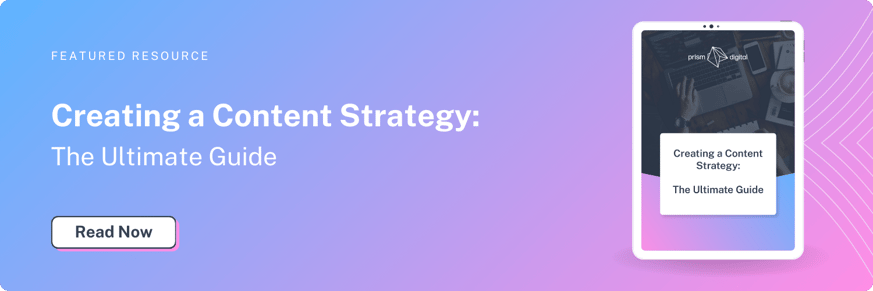The connection between content and revenue has never been easy to discern. But in today's digital landscape, content has become the linchpin of successful B2B marketing strategies. It's no longer just about creating content for the sake of having an online presence; it's about engaging an audience that will come to rely on your services, strategically leveraging content to drive tangible revenue growth.
But how do you prove that your content does any of that?
During the Content Marketing Institute webinar Show Me the Money: The Role of Content in B2B Revenue Growth (available on demand), Phyllis Davidson, vice president and principal analyst at Forrester, shared a process that should help...
Connecting content, customer experience, and revenue
According to Forrester’s research, B2B buyers generally find business content less than helpful. But Phyllis says one finding in particular underscores content’s role in driving revenue: 69% of respondents say they’re unlikely to expand contracts if the content they receive from a business isn’t valuable or helpful.
“I can think of no better point to make in this discussion about content and revenue growth than that,” she says.
But marketing teams often overlook this revenue opportunity. “No matter what you’re selling, chances are you need to focus on retention. And that means the content journey has to continue,” Phyllis says.
“We find, however, there’s always so much pressure on marketing to sell that the pre-customer stages of content planning get more attention.”
If your objective is to enhance the customer experience, then improving the content that aligns with the entire customer journey can have a substantial influence. After all, content plays a pivotal role in shaping the customer experience and contributing to the financial success of your business.
8 ways to connect content to B2B revenue growth
1. Understanding the B2B content landscape
Before diving into how content can impact revenue, it's crucial to understand the B2B content landscape. B2B buyers are now more informed and self-reliant than ever before. They conduct extensive research online before engaging with a salesperson. This shift in behavior places content at the forefront of influencing purchasing decisions.
2. Content mapping to the buyer's journey
To connect content to revenue growth, you must align your content strategy with the buyer's journey. This means creating content tailored to each stage of the journey, from awareness and consideration to decision-making. For instance, informative blog posts can capture the attention of prospects in the early stages, while case studies and product demos can aid decision-making.
3. Lead generation and nurturing
Content is a potent tool for lead generation and nurturing. High-quality gated content, such as eBooks, whitepapers, and webinars, can entice prospects to provide their contact information. Once you have leads, nurturing campaigns that deliver relevant content can guide them through the sales funnel, ultimately leading to conversions.
4. SEO and organic traffic
Investing in search engine optimization (SEO) to boost organic traffic is another way to connect content to revenue. By creating valuable, optimized content, you can improve your website's search ranking, attract more visitors, and ultimately increase the chances of conversion.
5. Thought leadership and authority
Publishing insightful thought leadership content can position your brand as an industry authority. When B2B buyers perceive your company as a trusted source of information, they are more likely to choose your products or services, directly impacting revenue.
6. Measuring content ROI
To demonstrate the connection between content and revenue, it's vital to measure the return on investment (ROI) of your content efforts. Track key performance indicators (KPIs) like website traffic, lead conversion rates, and revenue generated from content-driven leads. Analyze this data to refine your content strategy continually.
7. Integrating content with sales
Collaboration between your content and sales teams is crucial. Ensure that content is accessible to your sales team, so they can use it as a tool to nurture leads, address objections, and close deals more effectively.
8. Adaptation and optimization
Finally, the B2B landscape is constantly evolving. It's essential to stay agile, adapt your content strategy as needed, and optimize for changing market conditions to maintain consistent revenue growth.
A final thought
In conclusion, connecting content to B2B revenue growth is not only possible but essential in the digital age. By understanding your audience, aligning content with the buyer's journey, and measuring its impact, you can create a content strategy that drives real results and positions your business for long-term success.
.png?width=200&height=73&name=Logo(1).png)


